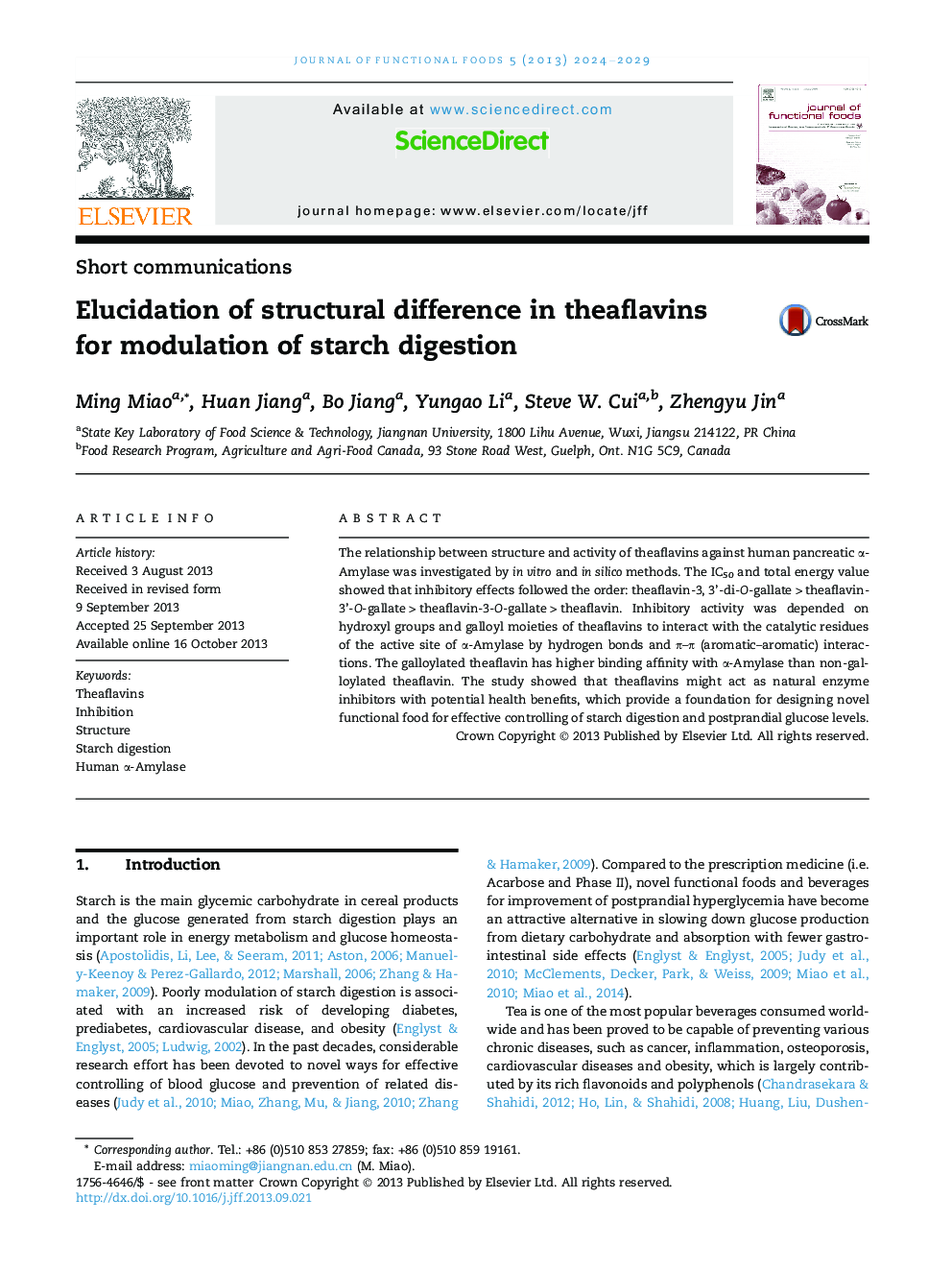| Article ID | Journal | Published Year | Pages | File Type |
|---|---|---|---|---|
| 10553453 | Journal of Functional Foods | 2013 | 6 Pages |
Abstract
The relationship between structure and activity of theaflavins against human pancreatic α-Amylase was investigated by in vitro and in silico methods. The IC50 and total energy value showed that inhibitory effects followed the order: theaflavin-3, 3'-di-O-gallate > theaflavin-3'-O-gallate > theaflavin-3-O-gallate > theaflavin. Inhibitory activity was depended on hydroxyl groups and galloyl moieties of theaflavins to interact with the catalytic residues of the active site of α-Amylase by hydrogen bonds and Ï-Ï (aromatic-aromatic) interactions. The galloylated theaflavin has higher binding affinity with α-Amylase than non-galloylated theaflavin. The study showed that theaflavins might act as natural enzyme inhibitors with potential health benefits, which provide a foundation for designing novel functional food for effective controlling of starch digestion and postprandial glucose levels.
Related Topics
Physical Sciences and Engineering
Chemistry
Analytical Chemistry
Authors
Ming Miao, Huan Jiang, Bo Jiang, Yungao Li, Steve W. Cui, Zhengyu Jin,
